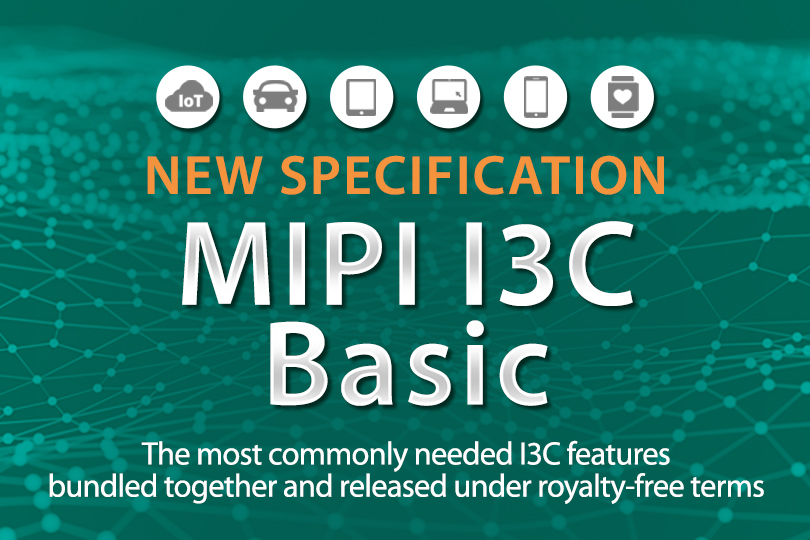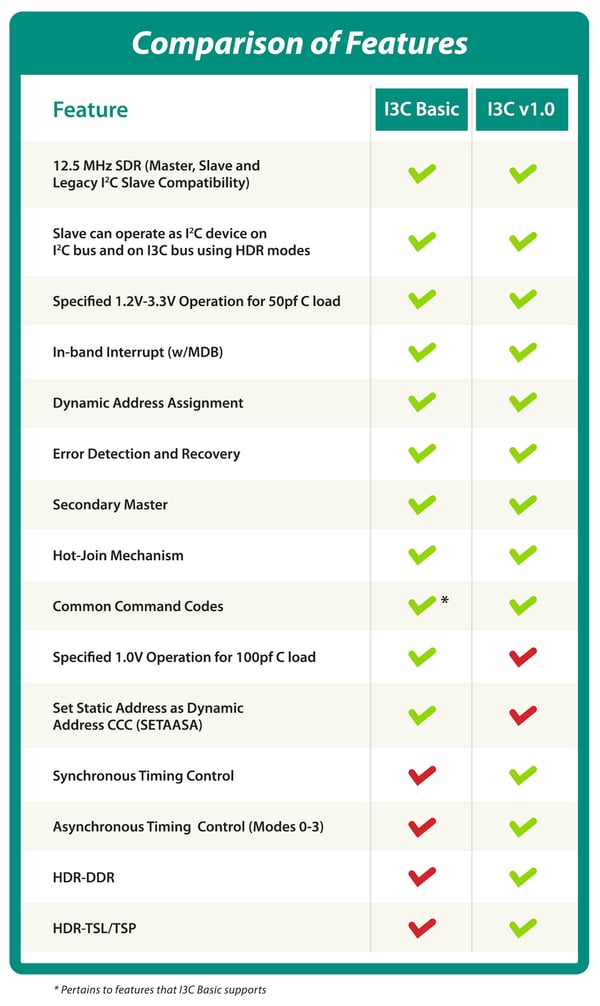1 min read
MIPI Alliance Delivers New I3C Basic Specification

- News & Events
- News
- Blog
When it was released in January 2017, the MIPI I3C specification came as a big relief to developers struggling to keep up with the proliferation of sensors in smartphones, semi-autonomous vehicles, drones and other mobile-connected products. From the start, we saw interest from companies large and small, and inside and outside of mobile, as well as other standards organizations, students, researchers and even hobbyists who welcomed it as a replacement to the aging, but ubiquitous I2C. To help spur innovation and grow the MIPI ecosystem, we just released MIPI I3C Basic v1.0, a subset of MIPI I3C that bundles the most commonly needed features, including:
-
A multi-drop bus that, at 12.5 MHz, is over 12 times faster than I2C supports while using significantly less power
-
In-band interrupts to allow slaves to notify masters of interrupts. This design that eliminates the need for a separate general-purpose input/output (GPIO) for each slave and thus reduces system cost and complexity.
-
Dynamic address assignment to avoid conflicting static addresses, providing flexibility and pin savings
-
Standardized discovery, and bus configuration and control

If you’d like to learn more about MIPI I3C Basic (and MIPI I3C), we’ve put together guidance in a new App Note for system integrators, which can be found along with other resources on the MIPI website.
No MIPI Alliance Membership Required to Implement MIPI I3C Basic
Because of the strong interest from industries beyond mobile and standards organizations looking to integrate I3C into their own specifications, MIPI I3C Basic is available for implementation without MIPI membership. This is intended to facilitate a royalty-free licensing environment for all implementers, as described within the specification. Now this broader community can immediately and efficiently begin using these capabilities as an alternative to I2C, and we expect I3C Basic to be a catalyst for innovation in industries well beyond mobile.
Companies that like what they find also can join MIPI Alliance to access additional MIPI I3C functionality, such as timing control and HDR Double Data Rate Mode. Membership also enables them to participate in specification development activities, interoperability workshops and other events.
We look forward to seeing the designs and use cases that emerge.






